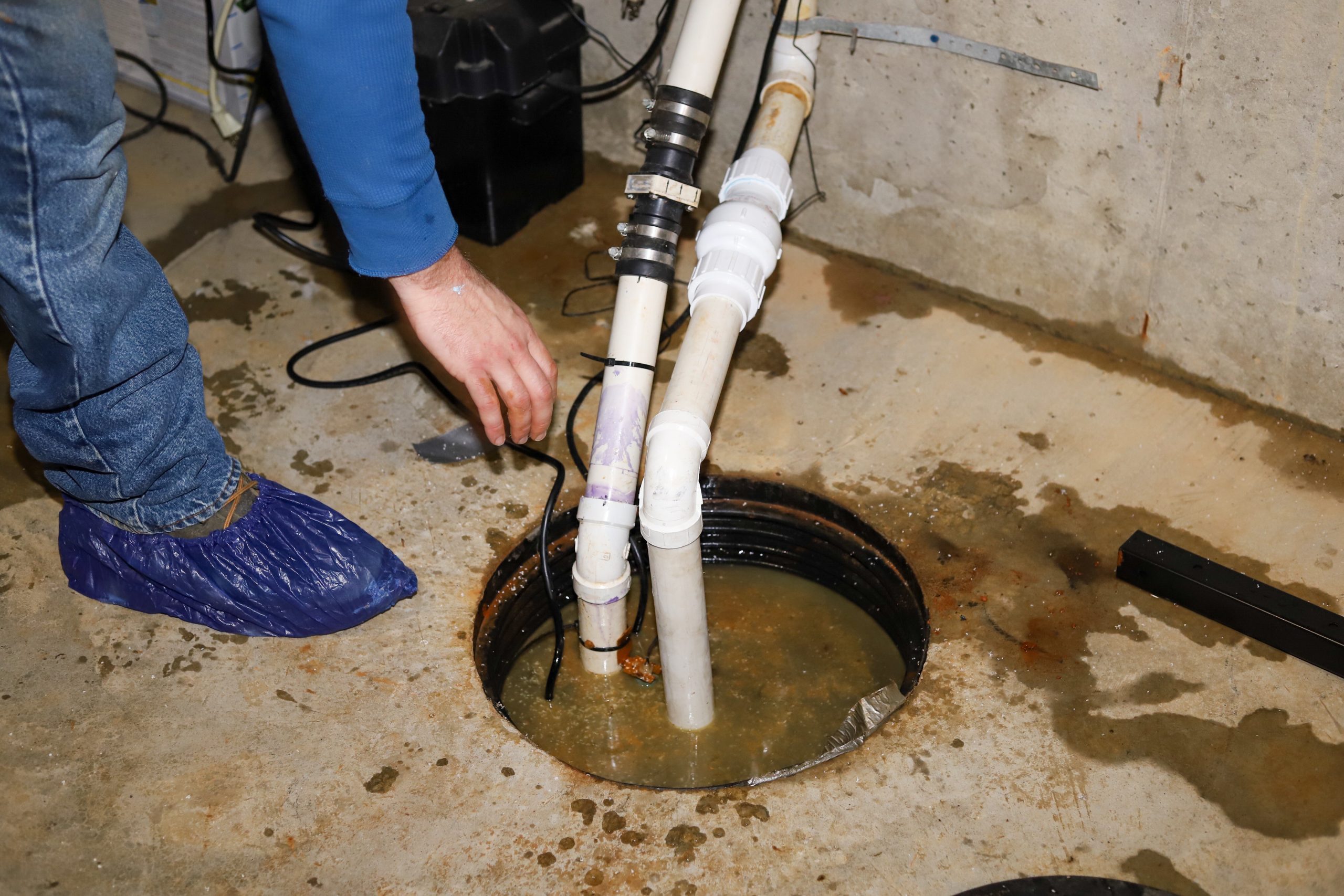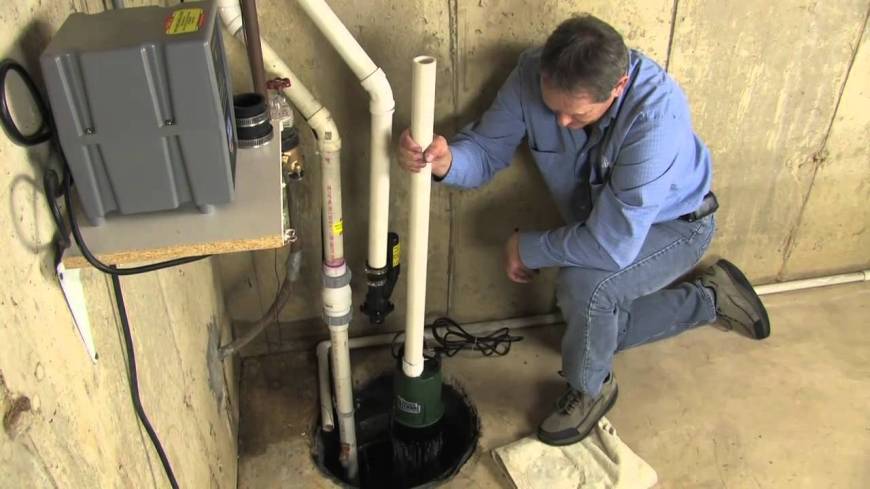They are making a few great points regarding How To Effectively Clean A Sump Pump overall in this content down below.

Sump pumps are vital components in numerous homes, especially in areas prone to flooding or excessive moisture. They aid stop water damages by effectively eliminating excess water from cellars or crawl spaces. However, like any other device, sump pumps call for normal upkeep to ensure they work properly when required one of the most. Cleansing your sump pump is a vital part of its maintenance, and comprehending just how to do it effectively can save you from pricey repair services and prospective catastrophes.
Introduction
Preserving a clean sump pump is essential for its proper functioning and long life. Ignoring this important job can lead to blockages, breakdowns, and eventually, water damage to your property. Therefore, finding out exactly how to cleanse a sump pump is vital for house owners who rely on these devices to maintain their cellars dry and protected.
Indicators of a Dirty Sump Pump
Understanding when your sump pump requires cleaning is vital for avoiding possible malfunctions. Some typical indications that suggest an unclean sump pump consist of strange noises during operation, minimized water circulation, and noticeable particles in the pit. If you notice any of these signs and symptoms, it's essential to clean your sump pump without delay to prevent any kind of further problems.
Preparing for Cleaning
Before you begin cleaning your sump pump, it's necessary to take some safety and security precautions. Beginning by shutting down the power to the pump to avoid any kind of electric mishaps. Additionally, use suitable protective equipment, such as gloves and goggles, to shield yourself from dust, debris, and possible virus.
Comprehending the Sump Pump
Prior to diving into the cleaning process, it's important to have a basic understanding of just how a sump pump functions. Typically set up in a pit or basin listed below the cellar flooring, a sump pump includes numerous vital elements, consisting of a pump, a float switch, and a discharge pipe. When water builds up in the pit, the float switch activates the pump, which after that pumps the water out with the discharge pipeline, away from the building's structure.
Detailed Overview to Cleaning Up a Sump Pump
Shutting Off the Power
Begin by detaching the power supply to the sump pump to avoid any mishaps while cleansing.
Looking For Appropriate Functioning
Before reinstalling the pump, execute a quick examination to guarantee that the float switch triggers the pump appropriately. Pour some water into the sump pit and observe the pump's operation. If whatever is operating appropriately, you can reconstruct the pump and reconnect the power supply.
Eliminating Particles and Dirt
Utilize a pail or a scoop to remove any visible debris, dirt, or debris from the sump pit. Dispose of the debris properly to stop it from blocking the pump or the discharge pipeline.
Cleaning up the Pump and Drift Switch
When the pit is clear of debris, very carefully eliminate the pump from the pit. Examine the pump and the float switch for any type of signs of damage or wear. Use a soft brush or cloth to clean the surface areas and remove any gathered gunk.
Flushing the System
After cleaning up the pump and float button, purge the sump pit with clean water to eliminate any staying dust or sediment. This will aid guarantee that the pump operates smoothly and effectively.
Upkeep Tips to Keep Your Sump Pump Clean
Along with periodic cleaning, there are several maintenance pointers you can follow to maintain your sump pump in ideal problem:
- Routine Evaluation: Inspect your sump pump routinely for any kind of indications of wear, damage, or clogs.
- Keeping the Surrounding Location Clean: Make Sure that the area around the sump pit is devoid of particles, dirt, and blockages.
- Evaluating the Pump Regularly: Evaluate your sump pump occasionally by pouring water into the pit and observing its procedure. This will help you determine any type of possible concerns before they rise.
Final thought
Cleaning your sump pump is a critical element of its maintenance and makes certain that it operates successfully when you need it one of the most. By complying with the actions described in this guide and including normal maintenance into your routine, you can expand the life expectancy of your sump pump and protect your home from water damages.
6 STEPS ON HOW TO CLEAN A SUMP PUMP PROPERLY
UNDERSTANDING SUMP PUMPS
Your sump pump plays a crucial role in protecting your home by managing and removing excess water. It primarily functions as a “shield”, guarding your basement against the damaging effects of water accumulation. The pump is housed in a sump pit in the lowest part of your basement, and its job is to pump out any water that collects there.
During heavy rainfalls or when snow melts rapidly, water can infiltrate your basement, posing potential risks like flooding, structural damage, and harmful mold growth. Here, the sump pump springs into action, pumping out the intruding water and directing it away from your home.
SAFETY FIRST
Before cleaning, remember to prioritize safety. Disconnect the sump pump from the power source to prevent any accidental electric shocks. Also, wear sturdy gloves to protect your hands from any sharp or dirty components within the pump.
REMOVE THE SUMP PUMP
After ensuring your safety, the next step is to remove the sump pump from its pit. Doing this might require careful maneuvering as you don’t want to damage any pump components. Once removed, clean the sump pit to remove any accumulated debris or sludge.
INSPECT THE PUMP
Inspect the pump for any visible signs of wear or damage. Check the power cord, float switch, and impeller housing. If any components look worn out or damaged, consider replacing them to ensure optimal performance.
CLEAN THE PUMP
Thoroughly clean the pump with warm, soapy water. Make sure to rid it of any dirt, gravel, or other debris that might impede its performance. You can use a toothbrush to clean the small, hard-to-reach parts of the pump.
REINSTALL THE SUMP PUMP
- Reinstall the pump into the sump pit
- Make sure it’s positioned correctly to remove the water effectively
- Once it’s back in place, reconnect it to the power source
TEST THE PUMP
Finally, pour some water into the pit to ensure the pump works correctly. It should start automatically and begin pumping out the water; if it doesn’t, check the power source and the positioning of the pump.
Remember, while cleaning your sump pump is an essential part of home maintenance, hiring a professional plumber for a thorough inspection and cleaning at least once a year is also important. This will ensure that your pump is in optimal condition, ready to protect your home from potential water damage.
BEST PRACTICES FOR CLEANING SUMP PUMP DISCHARGE PIPES
- Regular Inspection: Regularly inspect your discharge pipes, especially during heavy rainfall or snowmelt periods. Look for any signs of blockage or damage. Early detection of problems can prevent serious issues down the line.
- Periodic Cleaning: Over time, sediment and debris can accumulate in the discharge pipes, impeding the flow of water. Regular cleaning helps keep the pipes clear and functioning efficiently. You can use a high-pressure water jet to effectively clean the pipes.
- Insulation During Winter: In colder climates, discharge pipes can freeze, blocking the outflow of water. Protect your discharge pipes from freezing temperatures by insulating them with foam pipe insulation. This will ensure the sump pump can continue to discharge water even in freezing conditions.
- Proper Positioning: The discharge pipe should be positioned to direct water away from your home’s foundation. Improper positioning can lead to water seeping back into the basement. Ensure the pipe is long enough and angled correctly.
- Installation of a Check Valve: A check valve prevents water from flowing back into your sump pit after the pump has pushed it out. Installing a check valve helps maintain the efficiency of your sump pump and reduces the risk of flooding.
- Minimize Pipe Turns: Every curve or turn in the discharge pipe can decrease the efficiency of water flow. By minimizing turns and bends in your discharge pipe, you can increase the efficiency of your sump pump.
https://www.fullspeedplumbing.com/how-to-clean-a-sump-pump-properly9999/

I hope you liked our section about How To Effectively Clean A Sump Pump. Thanks for taking a few minutes to read our blog post. Be sure to take the opportunity to share this blog entry if you enjoyed reading it. Thanks for taking the time to read it.
Book A Free Estimate
Comments on “Verified Solutions for Taking Care of a Sump Pump”